Theology
Weekly Diocesan Bulletin - Sunday, December 25, 2016
25. December 2016 - 15:41 Twenty-seventh Sunday after Pentecost; Second Sunday before Nativity: Holy Forefathers of the Old Covenant; Saint Spyridon the Wonderworker, Bishop of Tremithus; Serbian Mother’s Day
Twenty-seventh Sunday after Pentecost; Second Sunday before Nativity: Holy Forefathers of the Old Covenant; Saint Spyridon the Wonderworker, Bishop of Tremithus; Serbian Mother’s Day
RESURRECTIONAL TROPARION - TONE TWO:
When Thou didst descend to death, O Life Immortal, Thou didst slay hell with the splendor of Thy Godhead! And when from the depths Thou didst raise the dead, all the powers of heaven cried out: O Giver of Life! Christ our God! Glory to Thee!
St. Alexander Nevsky, Russia’s Knight in Shining Armor
7. December 2016 - 11:29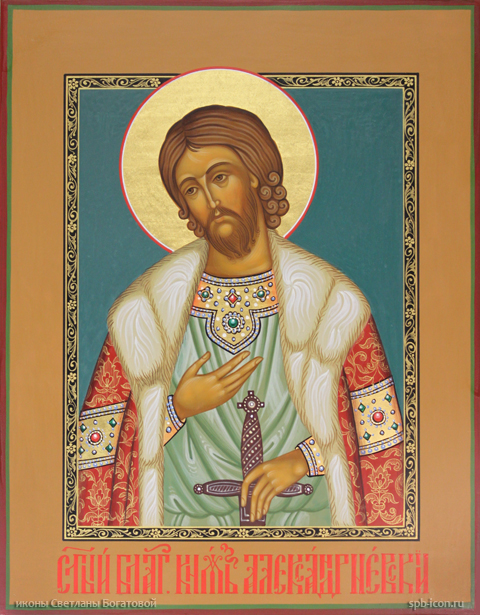 Commemorated November 23/December 6 and August 30/September 12
Commemorated November 23/December 6 and August 30/September 12
St. Alexander Nevsky was Russia’s “knight in shining armor.” His reputation as a man of exceptional valor and surpassing virtue inspired a visit by a German commander who told his people when he returned: “I went through many countries and saw many people, but I have never met such a king among kings, nor such a prince among princes.” The Russians called him their “prince without sin.”
He was born just four years before the fierce Tatars, under the leadership of Ghengis Khan, came galloping across the steppes of Kievan Rus. The once flourishing city state—whose social, cultural and spiritual achievements boasted few rivals in Western Europe—had been weakened by quarrelling princes and attacks of warring tribes, and it was an easy prey for the massacring and pillaging Asiatic aggressors. Fortunately, the Mongol Horde’s primary interest in conquest was financial gain, and although it imposed a heavy tax on its subjects, they were left to govern themselves and retained their traditions and religion intact, Nevertheless, the yoke of foreign sovereignty was burdensome; individual princes were reduced to acting as feudal landlords for their Mongol lords, and inclinations toward s national unity—the dream of Grand Prince Vladimir—were stifled. A strong leader was needed if the land of Rus’ was to have any hope of healing internal strife, of throwing off the Tatar yoke, and establishing its identity as a nation state.
God is a reality
18. November 2016 - 16:27
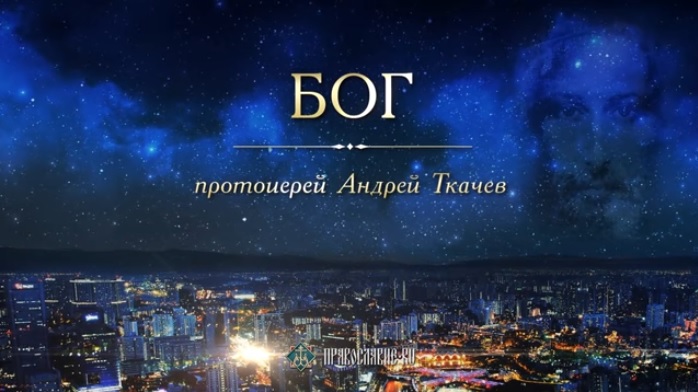 God is He of Whom no questions would arise within us if we weren’t sinful, if we hadn’t fallen from Paradise, as chicks fall from their nest—all would be otherwise, and God would not be a problem. But now God is a problem and a question. Does God exist? And if He exists, where is He? And if He exists and where—then what is He like? What do I owe Him? What does He owe me? A thousand questions arise within us. But none of this would be if we didn’t sin, if sin didn’t blind our eyes. We should recognize that all difficult and tricky questions about God are difficult precisely because of our sinfulness and the darkening of our minds. The darkened human intellect, the weakened human will, the worn-out man—he is disoriented, today he thinks one thing, and tomorrow another, now he thinks one thing, and within half an hour something completely different. Within a single minute his heart can fluctuate from the right to the left, because, again, he is disoriented and clouded.
God is He of Whom no questions would arise within us if we weren’t sinful, if we hadn’t fallen from Paradise, as chicks fall from their nest—all would be otherwise, and God would not be a problem. But now God is a problem and a question. Does God exist? And if He exists, where is He? And if He exists and where—then what is He like? What do I owe Him? What does He owe me? A thousand questions arise within us. But none of this would be if we didn’t sin, if sin didn’t blind our eyes. We should recognize that all difficult and tricky questions about God are difficult precisely because of our sinfulness and the darkening of our minds. The darkened human intellect, the weakened human will, the worn-out man—he is disoriented, today he thinks one thing, and tomorrow another, now he thinks one thing, and within half an hour something completely different. Within a single minute his heart can fluctuate from the right to the left, because, again, he is disoriented and clouded.
Venerable Cyriacus the Hermit of Palestine
12. October 2016 - 9:23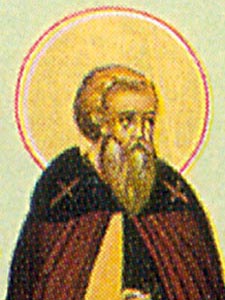 Saint Cyriacus was born at Corinth to the priest John and his wife Eudokia. Bishop Peter of Corinth, who was a relative, seeing that Cyriacus was growing up as a quiet and sensible child, made him a reader in church. Constant reading of the Holy Scriptures awakened in him a love for the Lord and of a yearning for a pure and saintly life.
Saint Cyriacus was born at Corinth to the priest John and his wife Eudokia. Bishop Peter of Corinth, who was a relative, seeing that Cyriacus was growing up as a quiet and sensible child, made him a reader in church. Constant reading of the Holy Scriptures awakened in him a love for the Lord and of a yearning for a pure and saintly life.
Once, when the youth was not yet eighteen years old, he was deeply moved during a church service by the words of the Gospel: “If any man will come after Me, let him deny himself and take up his cross and follow Me” (Mt.16:24). He believed these words applied to him, so he went right to the harbor without stopping at home, got onto a ship and went to Jerusalem.
Athlete of Virtues— St. Sergius of Radonezh
8. October 2016 - 17:49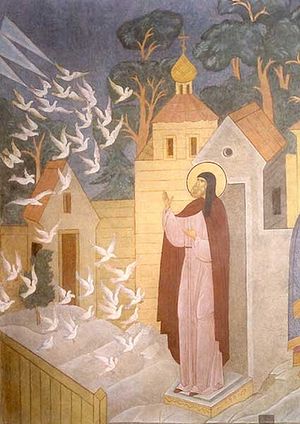 Commerated July 5/18; September 25/October 8
Commerated July 5/18; September 25/October 8
The lives of the saints as well as their writings are one of the ways that we learn about the spiritual life. In reading attentively the lives of saints, one of the first things we learn is that the saints are neither distinctively Russian or Greek (nor any other nationality); they are at all times Orthodox and Christ-loving. They breathe forth the same spiritual fragrance no matter when or where they lived.
One of the most beloved Orthodox saints of Russia is St. Sergius of Radonezh whose life for countless generations of pious Orthodox, both young and old, served as a source of spiritual nourishment. And so it can for us, if only we read it not so much with our minds, as with our hearts.
The Icon of the Savior "Not Made by Hands"
30. August 2016 - 8:53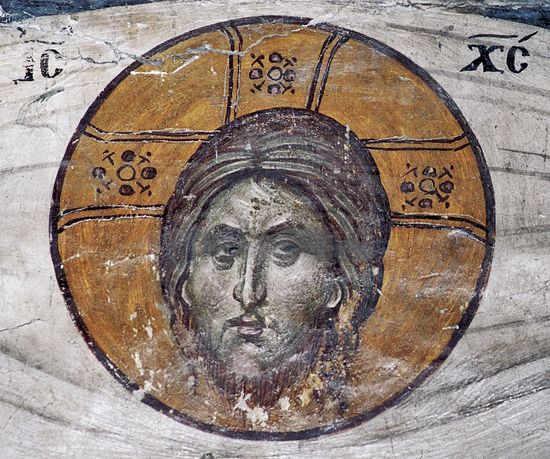 The Icon of the Savior, Image Not-Made-By-Hands, also Acheiropoieta (Byzantine Greek: αχειροποίητα, "made without hand") is one of the earliest icons witnessed to by the Church. The Feast of this icon is celebrated on August 16, during the afterfeast period of the feast of the Dormition, and is called the Third Feast-of-the-Savior in August.
The Icon of the Savior, Image Not-Made-By-Hands, also Acheiropoieta (Byzantine Greek: αχειροποίητα, "made without hand") is one of the earliest icons witnessed to by the Church. The Feast of this icon is celebrated on August 16, during the afterfeast period of the feast of the Dormition, and is called the Third Feast-of-the-Savior in August.

